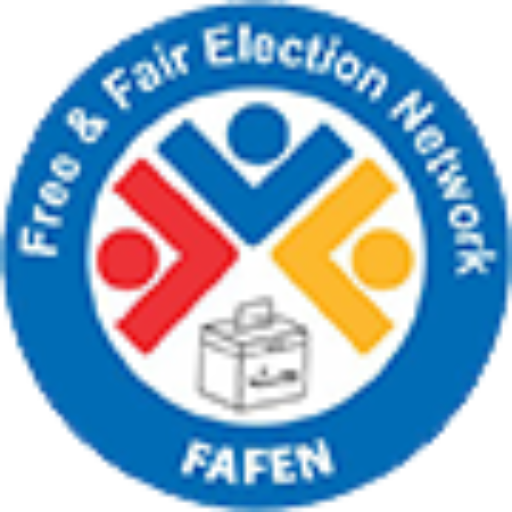Free and Fair Election Network (FAFEN) is the first effort in Pakistan to put trained, neutral observers in a statistically-relevant sample of polling stations in almost every National Assembly constituency nationwide. FAFEN observers are present in approximately one in every ten polling stations (7,500 out of 64,000 total stations).
Because of this statistical sample, FAFEN election observers’ data from around the country can be used to draw conclusions about the elections nationally, by province, and by constituency. All of the FAFEN data will not be available until the days following the elections. However, this second FAFEN Observation Election Day Update is drawn from preliminary information from Constituency Coordinators around the nation.
FAFEN has deployed 18,829 Polling Station Observers (PSOs) and Mobile Observers (MOs) in more than 250 NA constituencies. FAFEN recruited and trained approximately 20,000 observers, but more than 1,000 observers did not receive accreditation in time for the elections due to unnecessary procedural hurdles raised by District Returning Officers (DROs) and ROs.
This report is based information gathered by FAFEN Call Center Operators by speaking to 202 FAFEN Constituency Coordinators between 9:00-11:00am and 5:00-7:00pm on election day. This data is based on the information from 7,814 polling stations observed by FAFEN.
- Voter Turnout
FAFEN observers in more than 53 percent of polling stations recorded 400 or more votes polled by the end of the day. On average polling stations have 1,000 – 1,200 voters. The highest number of polling stations – more than 59 percent – with greater than 400 votes was in Punjab, followed by Sindh, with almost 49 percent, NWFP with 45 percent, and Balochistan with almost 17 percent.
- Changes in Voter Identification Rule in Polling Stations
In more than 6 percent of 3,673 polling stations observed by FAFEN personnel, the procedure was inconsistent during election day regarding identification that voters needed to present. At some time during the day, NIC/CNIC were required, as in the election law; at other times, these identification documents were not required to be shown by voters. These inconsistencies were highest in Sindh, with more than 14 percent of polling stations having procedure changes during the day.
- “Bogus Votes”
In at least 4 percent of observed polling stations, polling agents or election officials were reported stamping ballot papers. The highest incidences of bogus voting were reported from Sindh, where more than 12 percent of polling stations suffered from this problem.
- Opening of Polling Stations
More than 16 percent of 7,814 observed polling stations in the country did not open on time. The number was highest in NWFP, where more than 32 percent of polling stations opened late while almost 31 percent in Balochistan started to work later than the scheduled time.
- Restrictions on Observers
FAFEN observers in more than 8 percent of 3,925 polling stations reported that, as of the end of election day, they were being prevented from sitting inside their assigned polling stations to observe the counting process. Most restrictions were reported from NWFP, where more than 15 percent of observers are being stopped from witnessing the count. At the beginning of election day, FAFEN observes were denied entry by polling officials, security agencies or party workers at almost 11 percent of 6,710 polling stations from where FAFEN received reports. The highest percentage of denials was reported in Sindh, where FAFEN observers were turned away at 17 percent of 1,695 polling stations. At 19 polling stations, FAFEN observers were threatened by election officials, security forces and supporters of contesting candidates. These restrictions to election observers are the most significant obstacles to election transparency that have occurred on election day, based on FAFEN reports.
- Absenteeism of Polling Officials
Only 8 percent of polling stations in the country had one or more polling officials absent. The highest absenteeism as reported in NWFP, where almost 13 percent of polling stations worked without one or more election officials.
- Army and Paramilitary Forces
FAFEN observers reported that almost 32 percent of polling stations had either army or paramilitary personnel deployed inside or outside the premises. Such deployment was highest in Sindh with 55 percent of polling stations under army or paramilitary supervision, followed by 32 percent in Balochistan, 26 percent in NWFP and 24 percent in Punjab.
- Closed Women’s Polling Stations or Booths
Four percent of women’s polling stations or booths throughout the country were reported to have been closed for at least part of the day. The highest number of such reports was received from Punjab, where almost 5 percent of women polling stations or booths remained closed. In addition, FAFEN observers reported that women were prevented from voting at 16 polling stations.
- Restrictions on Polling Agents
Polling agents of one or more political parties were restricted from entering only 3 percent of observed polling stations.
- Unauthorized Persons inside Polling Stations
FAFEN observers report that in almost 11 percent of observed polling stations, Nazims or other local government officials were present in the polling stations for some length of time, potentially influencing voters.
- Violence and Conflict at Polling Stations
Thirteen polling stations were reported to have been captured, at least three by local Taliban. Fourteen polling stations were closed due to violence. At 30 polling stations, rival political groups engaged in violence.
FAFEN will release its Preliminary Statement on General Elections 2008 at 5:00 pm on Tuesday, February 19, 2008 at Serena Hotel, Islamabad.
About FAFEN: The Free and Fair Election Network (FAFEN) is a coalition of thirty leading Pakistani civil society organizations. It was established in 2006 to observe the election process, educate voters, and advocate for electoral and democratic reform.

